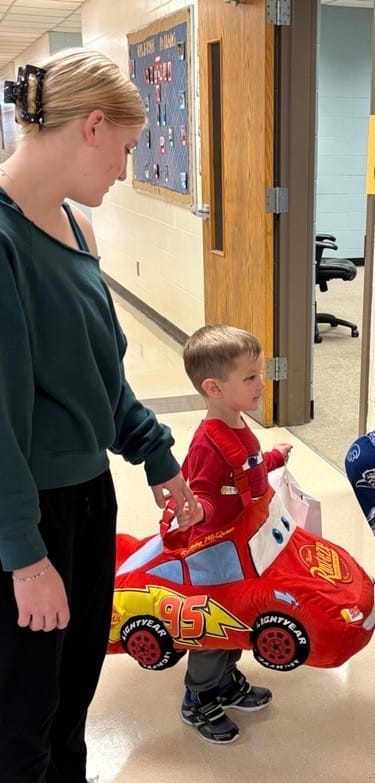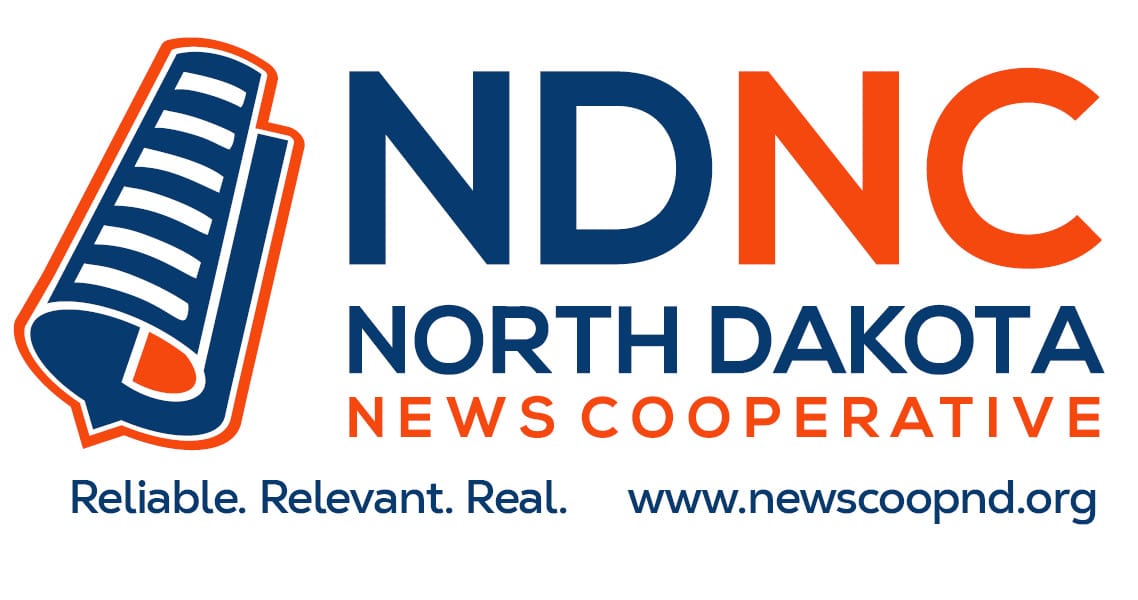Despite challenges, child care looks to innovate in North Dakota
Increased collaboration could help address persistent issues

Addressing child care staffing shortfalls, affordability, availability and quality has long been a challenge across North Dakota.
Workers can be hard to find, must complete proper training and vetting, and are often underpaid.
Care prices continue to climb. Average annual costs for infant care in North Dakota are more than $12,000, and for a 4-year-old, just over $10,000, according to estimates from the Washington D.C.-based Economic Policy Institute.
In some areas, finding child care is a major challenge, and if available, quality can range widely.
One program run out of the James Valley Career & Technology Center could provide a template for addressing all of these issues, those following child care developments say.
Launched and licensed in August, Little Blue Jays Nest has increased the number of child care slots by 65 locally and is helping provide on-site care for children of public school staff and some members of the wider community.
The most innovative aspect is how the child care facility isn’t just physically within the CTC, but how programs offered to high school students at the center could provide a feeder pipeline for future, well-trained child care workers.
“We saw that there was a drastic need in our community for child care, and during exit interviews at the school, one of the reasons they were losing teachers is that finding child care was really tough,” said facility coordinator Teresa Olson.
Olson also serves as an instructor at the CTC, teaching a range of classes that can lead to certifications, including a Child Development Associate (CDA) credential that could qualify someone for better-paying child care positions such as a center director.
Olson currently has 13 high school students going through the three classes required to get 120 hours needed as part of the CDA credential, while another 10 completed the course hours.
Currently, around 10 out of all of those come in throughout the day to help out with the kids at Little Blue Jays Nest, she said. Another who had already completed all the requirements has become a full-time staff member.
“We’d love to grow our own workers, and we’ve grown one so far,” Olson said. “What’s fun for us is we know them, we’ve seen their skills, and we get to see where they shine, and we can help them build that.”
The program isn’t just to build a child care workforce for the in-house care, but for Jamestown as well, and for the state as a whole, she said.
Olson and staff visited Lake Region State College in Devils Lake to look at how the 2-year early childhood associate degree could be applied in a career and technical training setting for high school students.
CDA credit can also go toward some college credit, depending on the institution, if a student wants to pursue a different career in K-12 education.
“Our goal is to have kids as college ready as possible,” Olson said. “If they are going into child care, they can have these experiences. If they absolutely love it, they know it's for them, great, we can help them. If they really like the kids but think it’s not for them, they can maybe go into elementary or middle school education. It gives them a lot of exploration opportunities.”

Opportunities for innovation, collaboration
Verla Jung, a community engagement coordinator at nonprofit Child Care Aware, said there’s been an increase in the number of schools creating child care space in their facilities, largely because of the huge need.
Number one, it helps retain teachers who might leave if there’s no child care available in the community. Many also offer openings for the general public, expanding the number of child care slots available in the community.
“Schools have come to us and said, we can’t recruit, we can’t retain, lots of our new teachers have small children or they’re going to start families and they won’t come here because there is no child care availability for them,” Jung said.
Schools also often have the ability to offer space as well as cut costs related to utilities, food service and added costs like snow removal that a newly built, dedicated child care center would have to absorb, she said.
The James Valley CTC was able to access a grant through the Regional Workforce Impact Program to renovate part of the building to create Little Blue Jays Nest and rework their program to operate as a feeder system for talent, Jung said.

“It’s going to take a couple of years to generate the people, but they now have students actively participating,” Jung said.
Other schools across the state have also accessed grants or are collaborating with local businesses to create more child care facilities at schools, she said.
The unique program in Jamestown is getting interest across the state, Child Care Aware’s lead coordinator Keely Ihry said.
“It’s kind of exciting in that it’s crossing a lot of different conversations right now, in the business communities, the school communities and in the child care communities,” Ihry said. “If we can all work together, then that's when we can start seeing some of those bigger, successful projects happening in those communities.”
Kenzi Brown, who opened Coyote Pups Learning Den in Williston in 2020, and also serves as the local CTE director, said her biggest need at the moment isn’t necessarily staff.
What’s needed there is a collaboration to establish more infrastructure to increase the number of slots for child care in the area.
According to Child Care Aware’s surveys of needs across the state, licensed child care in Williams County only met around 18 percent of the demand, according to 2024 data.
Coyote Pups currently has a capacity of 160 and is looking to expand to a 200-kid center at some point, if those partnerships can be found.
“We are at the point where we have to start building,” Brown said.
“My dream is that people will say, yes this is a need and we can’t have employees without them having childcare, so we will help financially and contribute to a building, especially those oil field companies, those are our main families,” Brown said. “So, just getting the conversation going is where we are at right now.”
Arik Spencer, CEO and president of the North Dakota Greater Chamber of Commerce, said child care remains a key workforce issue for many of the organization’s member businesses and said state policy initiatives in recent years have been an important step forward.
“With continued collaboration, we can make lasting progress,” Spencer said. “Building a strong childcare system will require both a dedicated workforce and innovative solutions to make care affordable for every family.”
Positive trends, looming concerns
State and local investments have helped increase the ability of more people to access child care in the state in those areas where it is available.
Currently, around 4,800 families in the state qualify for assistance with covering child care costs, meaning 7,400 children who otherwise might not be able to access child care are able to.
Both of these are at their highest levels since funds were made available to help cover those costs in 2021.
“You can see the trend upward over the last few years, which is great given the increased investment in this area,” said Xanna Burg, director of Kids Count covering both the Dakotas and Montana.
Burg noted an increasing number of middle-income parents at the upper levels of the range allowed to access that funding are also taking the opportunity to use it, following expansion of eligibility in February 2022 through the use of American Rescue Plan Act (ARPA) funds.
“I think North Dakota has done quite well getting their eligibility up to 75% of state median income,” Burg said.
There is some concern that changes will be made to eligibility requirements for the Child Care Assistance Program (CCAP) in the state, however.
Some child care providers noted that the North Dakota Department of Health and Human Services notified them in September about eligibility changes that would be implemented in November but pulled the order back following pushback.
The ND DHHS told NDNC as of the time of this writing that no decisions have been finalized for any changes to the program.
Others have noted that eligibility changes to Medicaid and the Supplemental Nutrition Assistance Program at the federal level under the tax and spending package passed by Congress this summer could also have knock on effects.
This means families relying on assistance to keep children in child care and often underpaid daycare staff who use Medicaid or SNAP may face further cost pressures if CCAP eligibility is also changed.
Healthcare information nonprofit KFF estimates that North Dakota will have $1 billion less in federal money for Medicaid over the next ten years based on Congressional Budget Office cost estimates.
Looking at changes to SNAP, Georgetown University’s Center on Poverty and Law estimates the state of North Dakota will have to spend around double the amount it currently allocates to SNAP to cover those in the program, from around $12 million currently to over $24 million.
The federal spending package passed this summer included a state-matching requirement for SNAP benefits that increases the share of administrative costs covered by each state.
Daniel Haines, chief policy officer at the National Association for the Education of Young Children, said in addition to indirect state budget impacts from the federal changes to these programs, “we anticipate the early childhood education workforce will face additional impacts and challenges, especially as many educators themselves rely on programs like Medicaid and SNAP.”
Brown of Coyote Pups in Williston said many of those families currently covered by CCAP also access other assistance, and that there hasn’t been a pause in the CCAP funding or changes since the order was rescinded.
“If that were to happen, we do have a large amount of families (on CCAP),” Brown said.

The North Dakota News Cooperative is a nonprofit news organization providing reliable and independent reporting on issues and events that impact the lives of North Dakotans. The organization increases the public’s access to quality journalism and advances news literacy across the state. For more information about NDNC or to make a charitable contribution, please visit newscoopnd.org. Send comments, suggestions or tips to michael@newscoopnd.org. Follow us on Twitter: https://twitter.com/NDNewsCoop.



